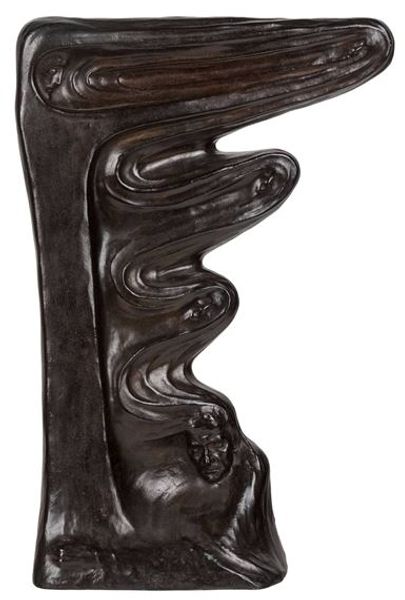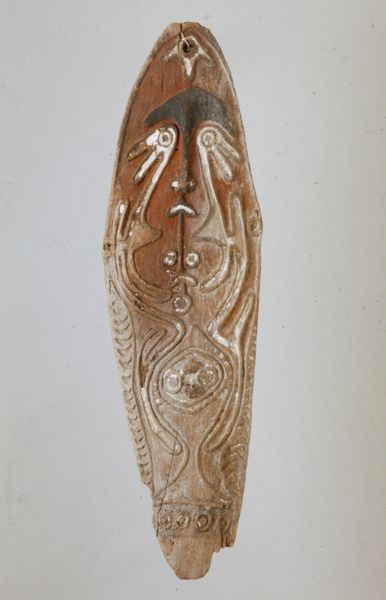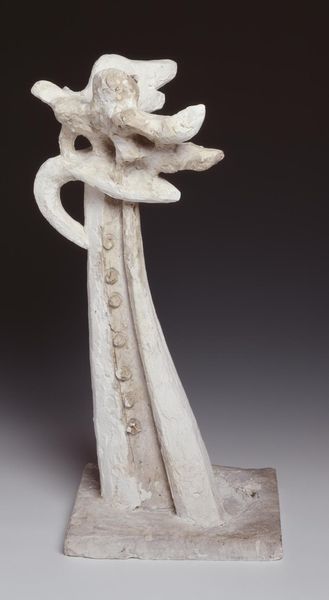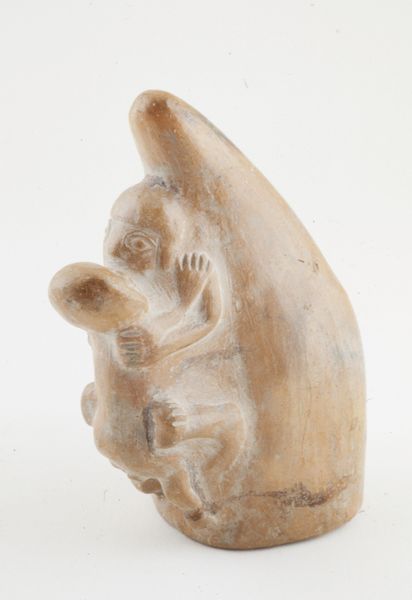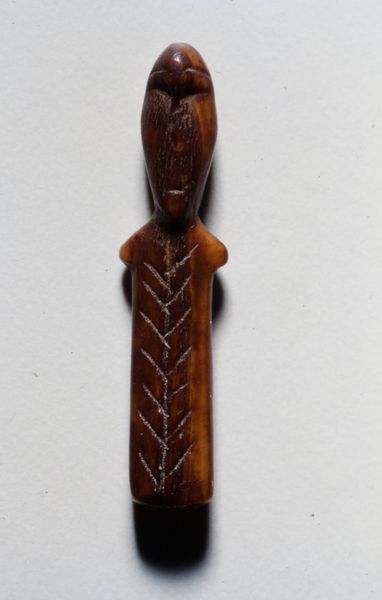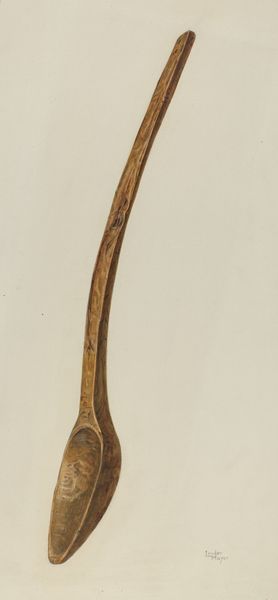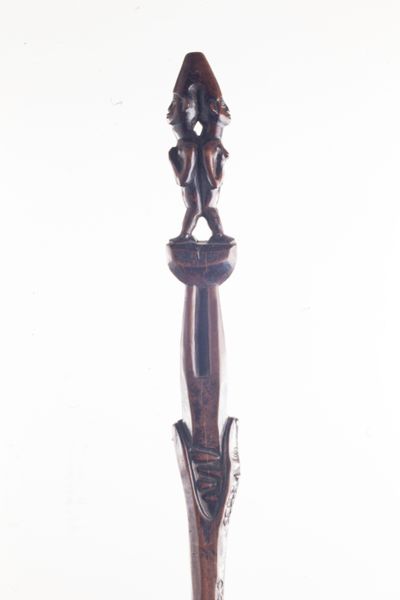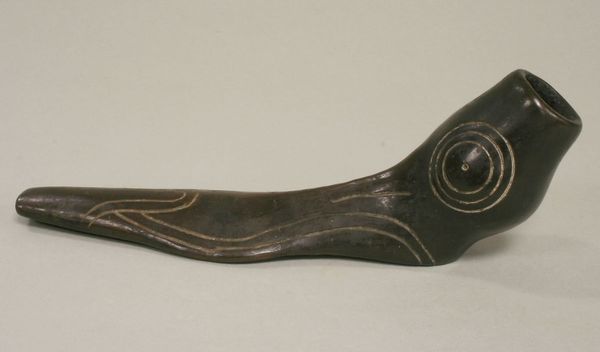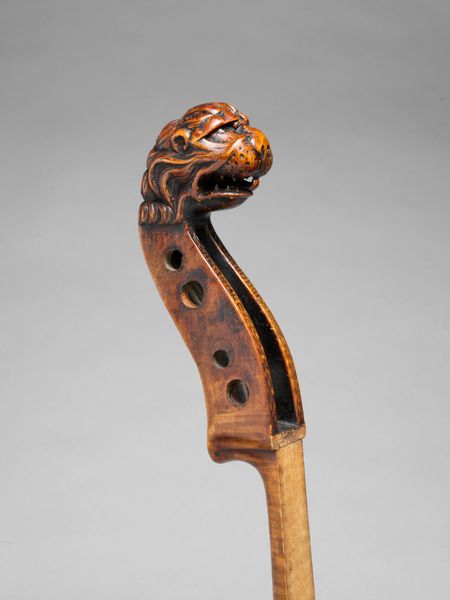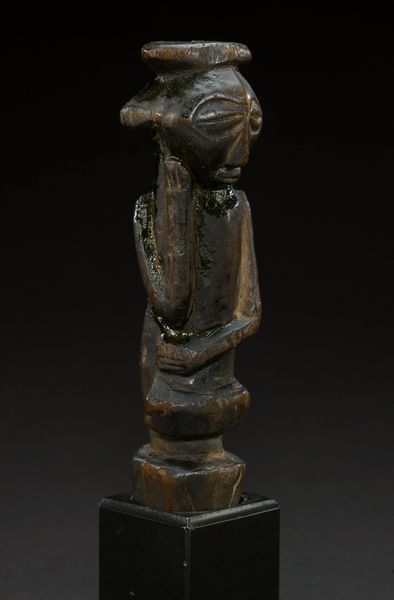
carving, sculpture, ivory
#
portrait
#
carving
#
sculpture
#
figuration
#
sculpture
#
ivory
Dimensions: 4 3/4 × 7/8 × 2 in. (12.07 × 2.22 × 5.08 cm)
Copyright: Public Domain
Curator: This exquisitely carved object, known as "Amulet," dates from the late 19th century and represents the Luba people. Carved from ivory, it's now part of the collection here at the Minneapolis Institute of Art. Editor: It has a weighty presence despite its size. I am drawn to the creamy texture of the ivory and the way the carver captured the serene downturn of the figure's head. It appears almost melancholic. Curator: Ivory carvings such as this served not merely as aesthetic objects but played a significant role in spiritual practices, intended as protective charms, worn on the body or kept as objects of prestige, demonstrating not only spiritual power, but political capital and access to limited goods like ivory. Editor: I wonder about the stories it could tell us about Luba social structures and the intersection of spiritual belief with material wealth during the late 19th century. What was the specific context of power that this object moved within? Was its function primarily ritualistic, a display of elite status, or both? Curator: These carvings provided ways for the Luba people to project certain values, whether concerning gender or the proper relationships between generations or even their standing in comparison with other groups they encountered. Editor: Considering the ivory itself, how does that medium figure into the understanding of colonial trade routes and the larger extractive networks of the period? Does the use of ivory itself implicate it in complicated systems of labor exploitation and ecological damage? Curator: Absolutely. It highlights how objects such as these can serve as potent entry points for reflecting on global power dynamics that extend beyond the communities of their origin. By asking ourselves such questions we might become a better global society. Editor: Exactly. And thinking critically about an object's history can become an empowering and respectful process for people both inside and outside those cultural contexts. The more people willing to challenge their preconceptions of value and beauty, the better!
Comments
No comments
Be the first to comment and join the conversation on the ultimate creative platform.
